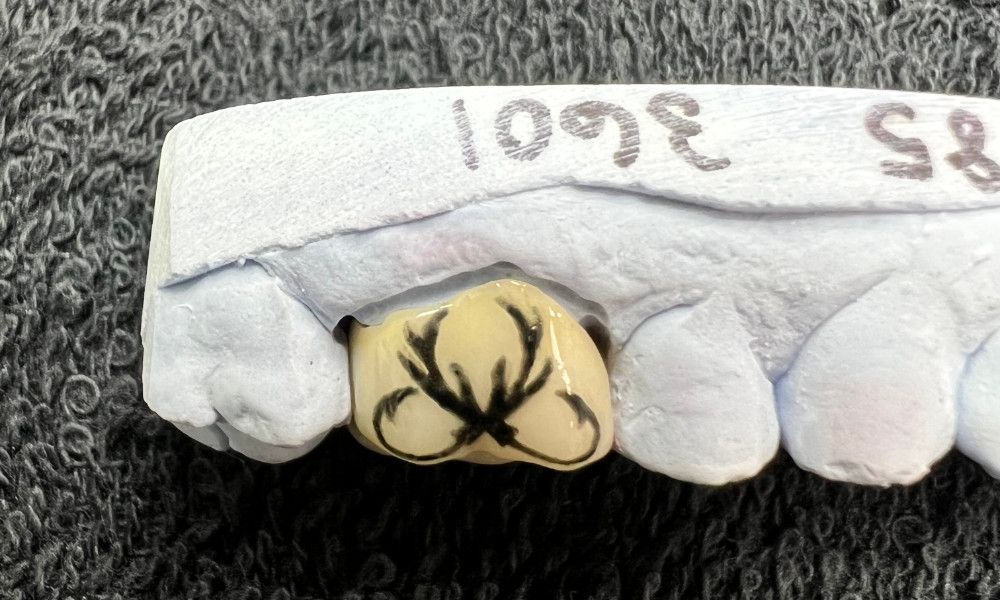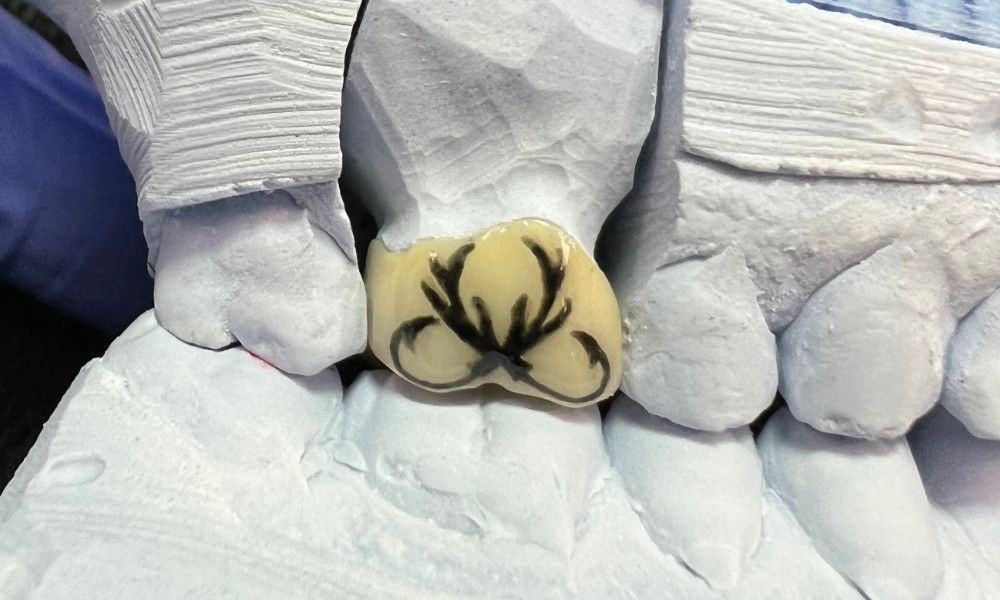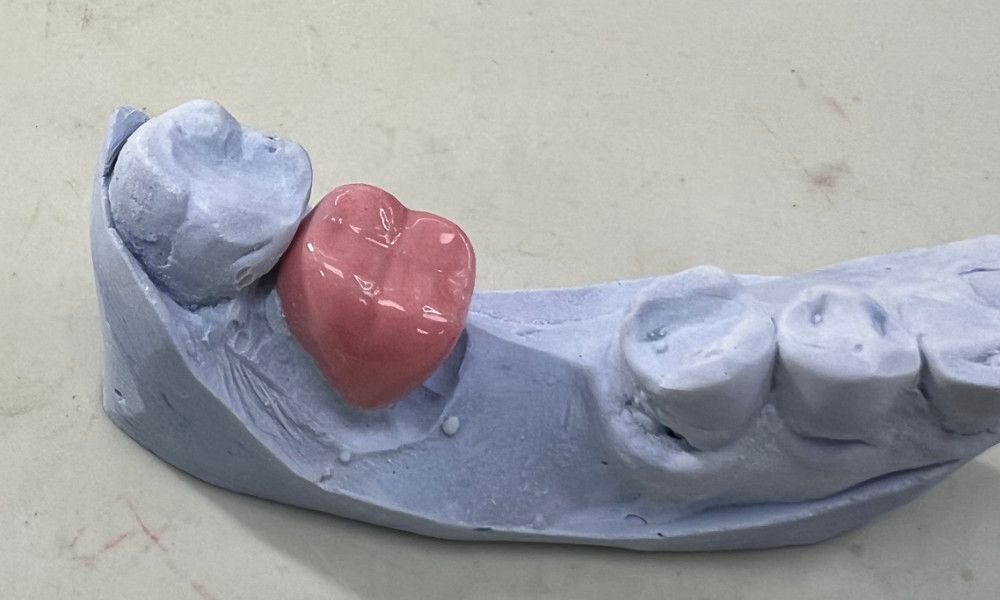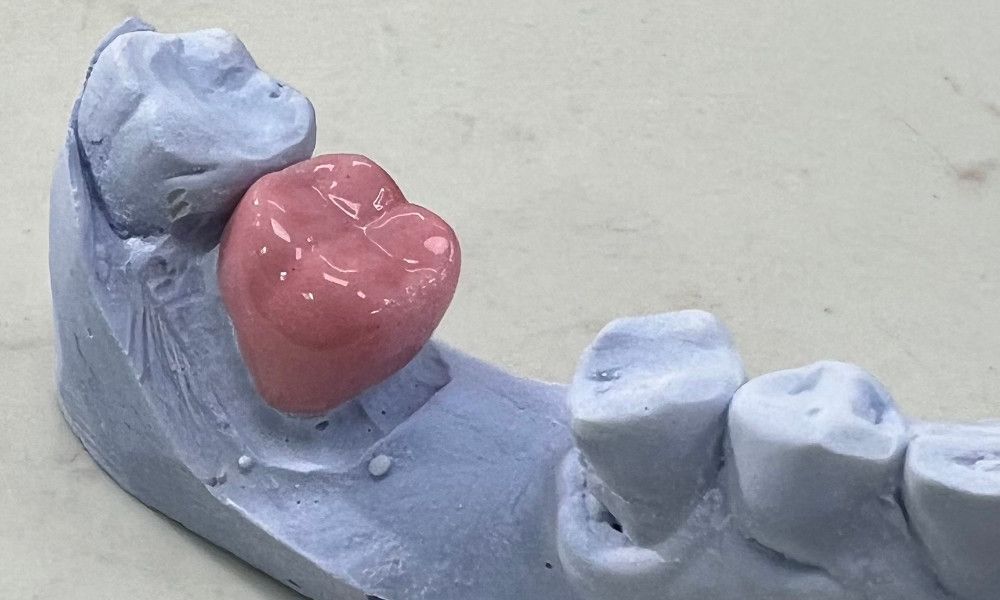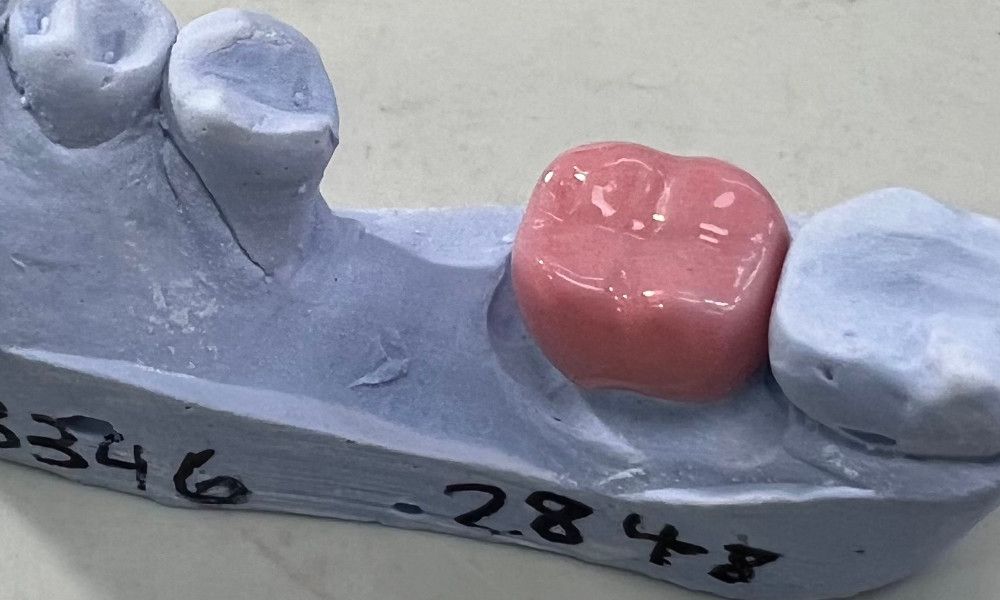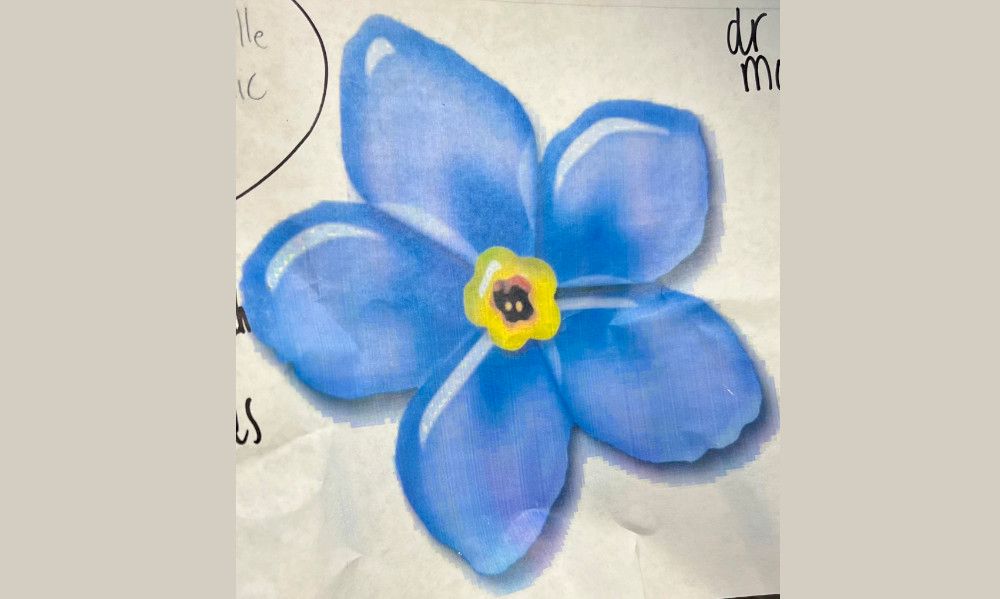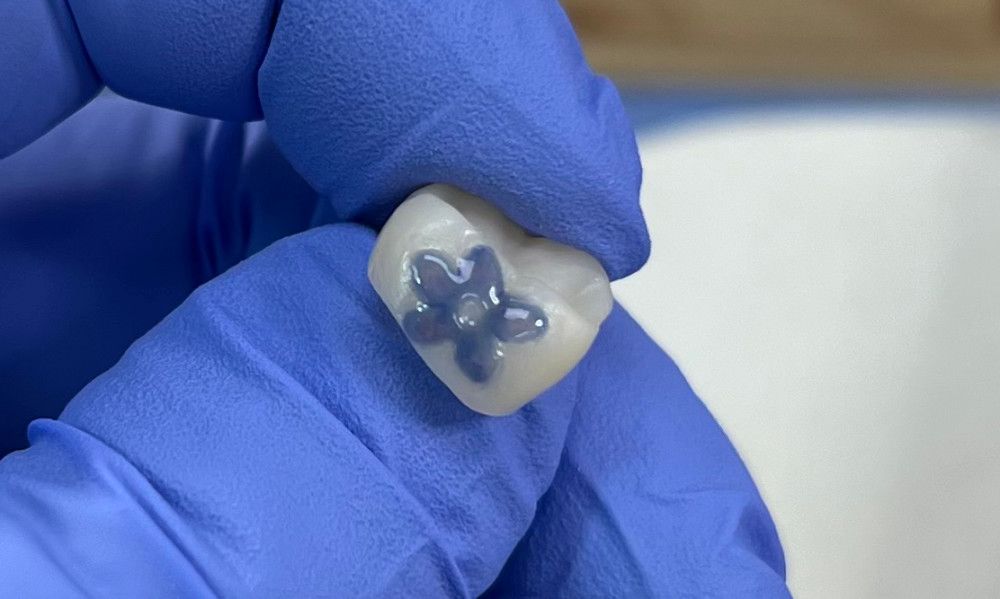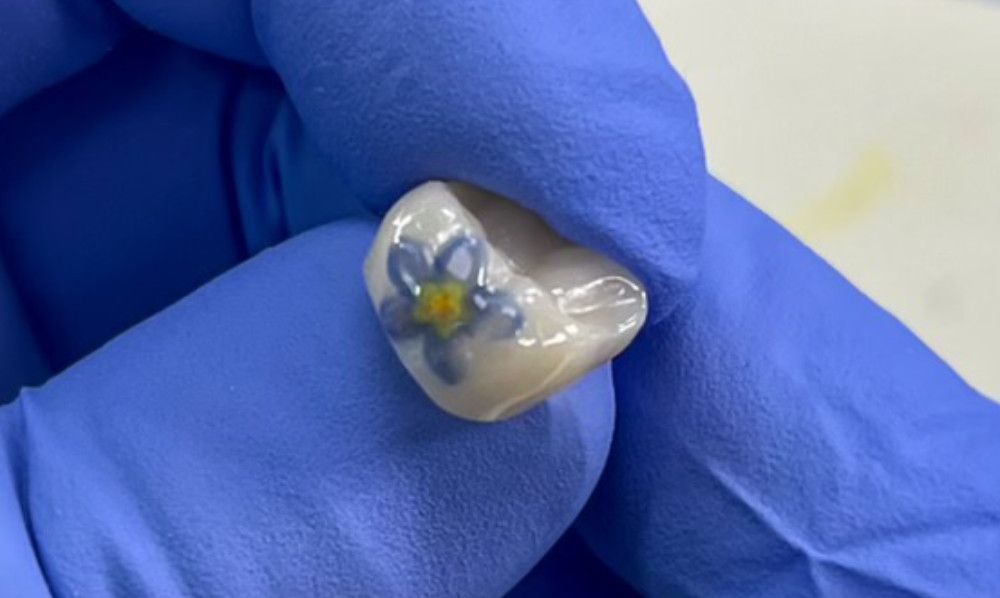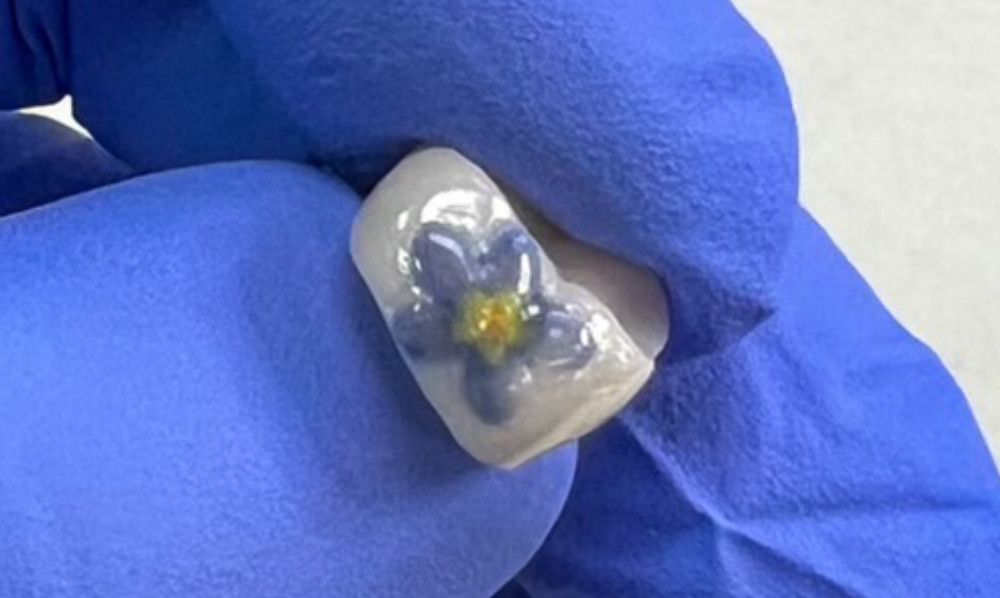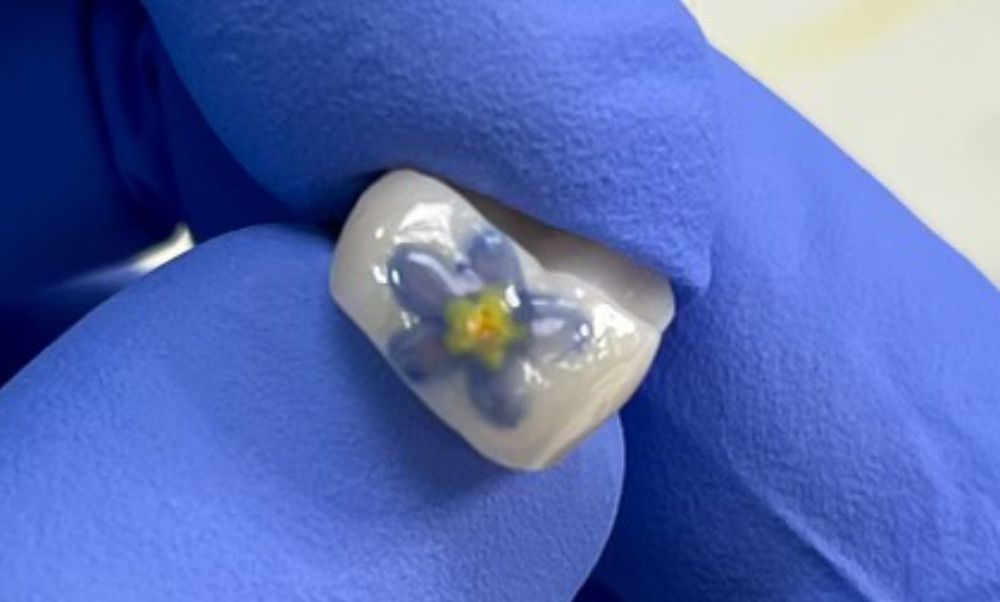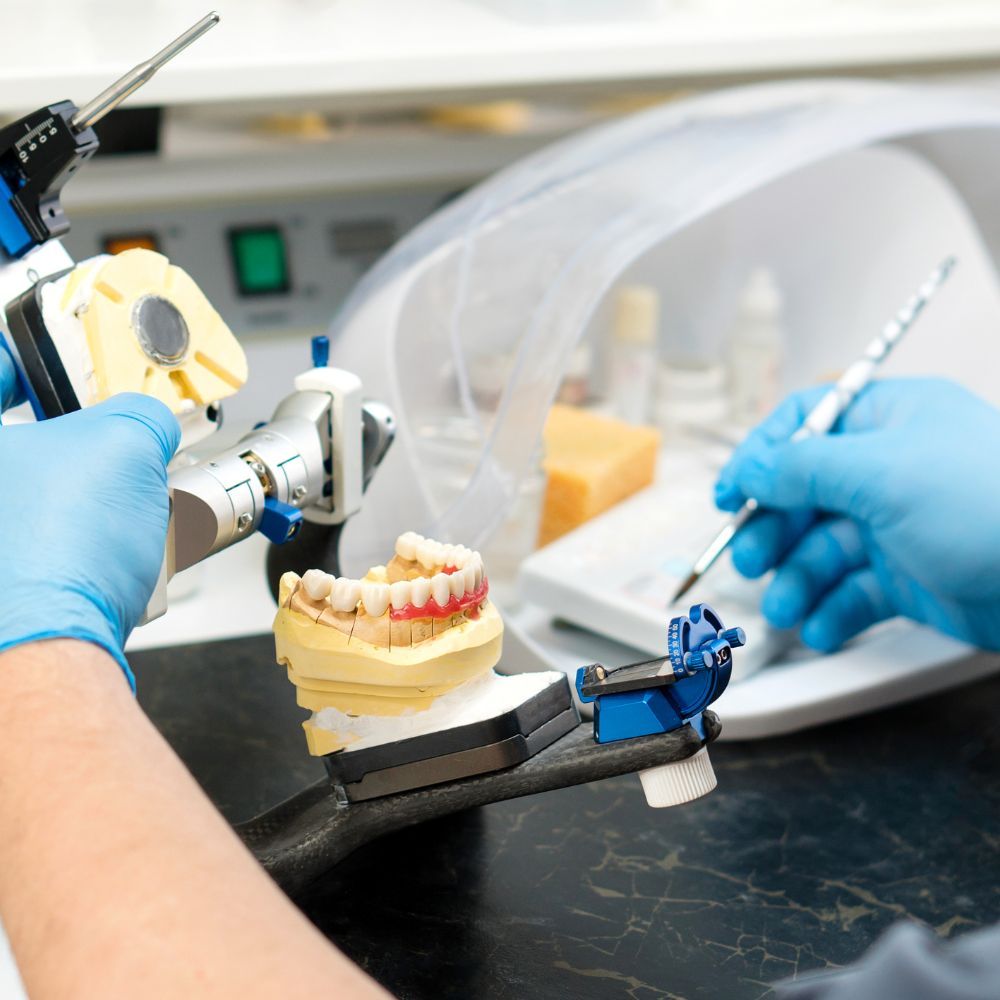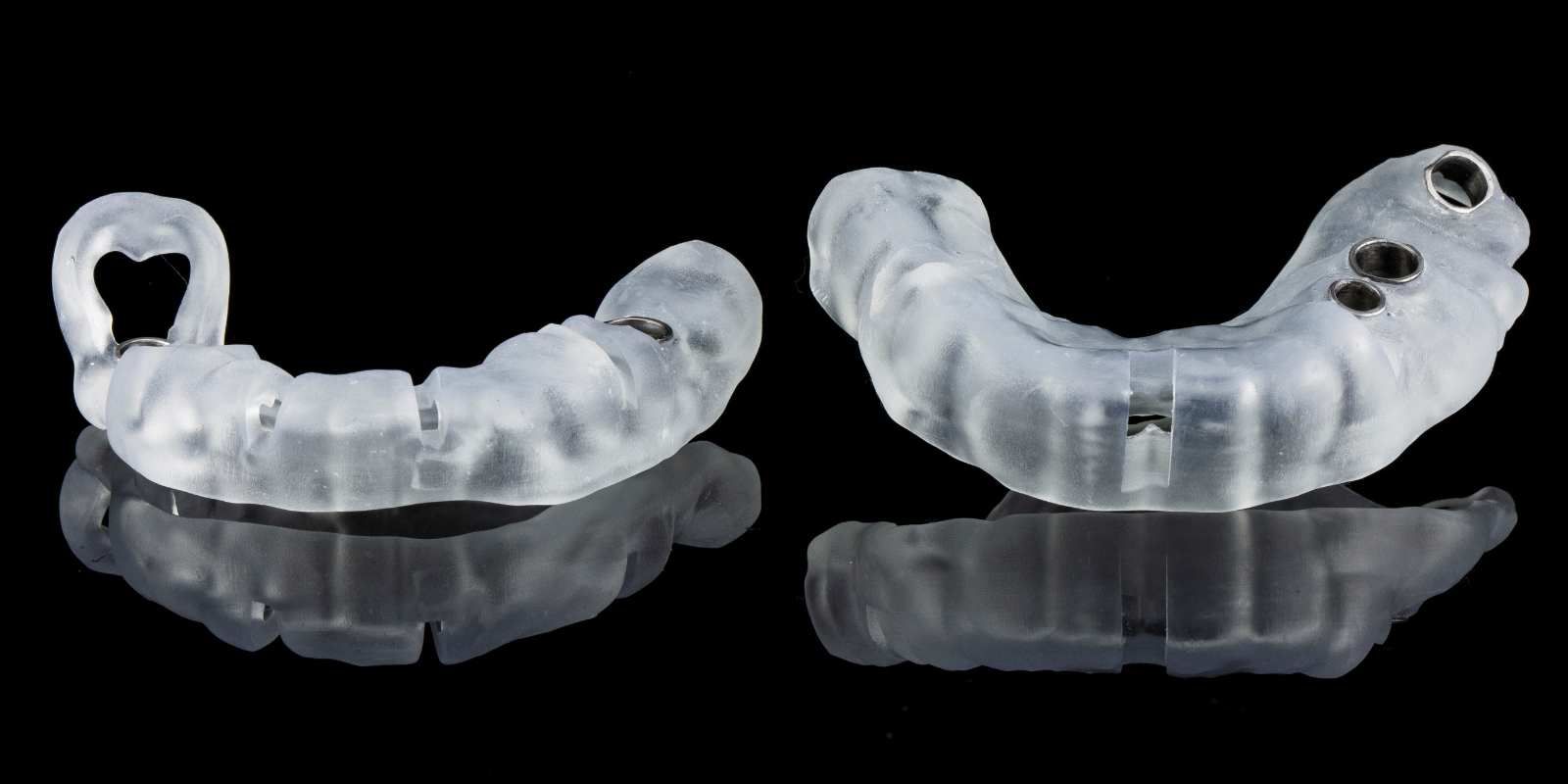Tooth Tattoos on Crowns
(Custom Occlusal Art)
Comfortable, Durable, and Esthetic Restorations for Every Patient
A small, hand-painted design fired under glaze on the occlusal surface of a posterior crown. It’s a fun, personalized touch that doesn’t change fit or occlusion and holds up to everyday wear.
What is a tooth tattoo?
Also called custom tooth art, occlusal art, or crown micro-art, a tooth tattoo is a tiny motif—think ladybug, heart, initials, or a team-color dot—applied as ceramic stain and fired under glaze. The result is a durable, sealed design that blends with the restoration and keeps margins, contacts, and occlusion intact.
What we offer
Flowers, ladybugs, and initials - these micro-motifs are hand-painted and sealed under glaze. Available on posterior zirconia/e.max crowns (lingual by request).
- Materials: full-contour zirconia and e.max
- Placement: primarily occlusal on posterior crowns; select linguals by request
- Size: typically 2–3 mm motif; crisp color with subtle shading
- Motifs: ladybug, heart, initials, color dot, simple icons (custom ideas welcome)
- Finish:
stain
fired under glaze
for long-term color stability
How to request a dental crown tattoo
(Rx notes)
On your Rx, add:
“Tooth tattoo on #__, motif: __ (2–3 mm), occlusal.”
- Attach a reference photo for the design if you’d like a specific color or icon
- Digital or traditional: we accept iTero, Medit, 3Shape scans and traditional impressions
- If requesting lingual placement, note “lingual if clearance allows”
Gallery: Tooth Tattoo Examples
Browse real-case photos below for size, placement, and color ideas. Popular picks: ladybug, initials, and a subtle team-color dot for sports fans.
Ready to Start Your Next Implant Case?
Whether it’s a single crown or a full-arch conversion, Summit Horizon in St. Louis, MO makes implant workflows straightforward—digital or analog. Submit your case today and experience seat-time savings and predictable esthetics.
FAQs About Tooth Tattoos
Will it wear off?
The design is sealed under glaze. Everyday brushing and routine polishing are fine. Very heavy, repeated polishing over time may soften the color.
Does it affect fit or occlusion?
No. The art is applied after milling/pressing and then glazed. We preserve contacts, margins, and occlusion.
Can it be removed later?
Yes. Your clinician can polish it away if desired, with a minor change to surface texture.
Where does it work best?
Posterior occlusal surfaces on zirconia or e.max crowns with adequate clearance and normal occlusal loads.
Products & Services


